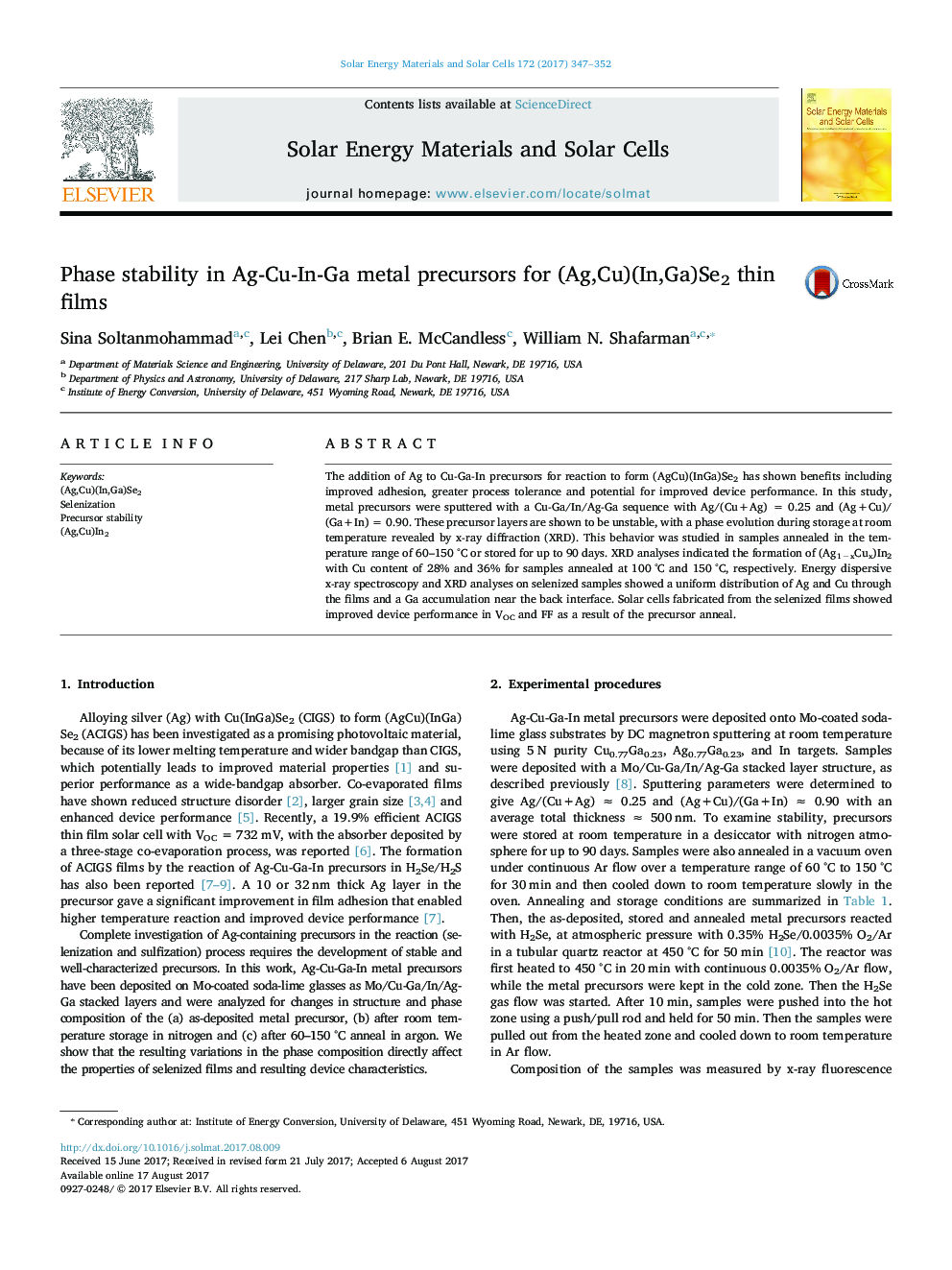| Article ID | Journal | Published Year | Pages | File Type |
|---|---|---|---|---|
| 6456966 | Solar Energy Materials and Solar Cells | 2017 | 6 Pages |
â¢Phase composition prior to reaction affect the quality of the absorber material.â¢Ag-Cu-In-Ga precursors are shown to be unstable during storage at room temperature.â¢(Ag1âxCux)In2 alloy phase formed after room temperature storage/60-150 °C anneal.â¢Storage/annealing the precursors improves the ACIGS device performance.â¢The ACIGS device with 15.2% efficiency was achieved from 90 days stored precursor.
The addition of Ag to Cu-Ga-In precursors for reaction to form (AgCu)(InGa)Se2 has shown benefits including improved adhesion, greater process tolerance and potential for improved device performance. In this study, metal precursors were sputtered with a Cu-Ga/In/Ag-Ga sequence with Ag/(Cu+Ag) = 0.25 and (Ag+Cu)/(Ga+In) = 0.90. These precursor layers are shown to be unstable, with a phase evolution during storage at room temperature revealed by x-ray diffraction (XRD). This behavior was studied in samples annealed in the temperature range of 60-150 °C or stored for up to 90 days. XRD analyses indicated the formation of (Ag1âxCux)In2 with Cu content of 28% and 36% for samples annealed at 100 °C and 150 °C, respectively. Energy dispersive x-ray spectroscopy and XRD analyses on selenized samples showed a uniform distribution of Ag and Cu through the films and a Ga accumulation near the back interface. Solar cells fabricated from the selenized films showed improved device performance in VOC and FF as a result of the precursor anneal.
